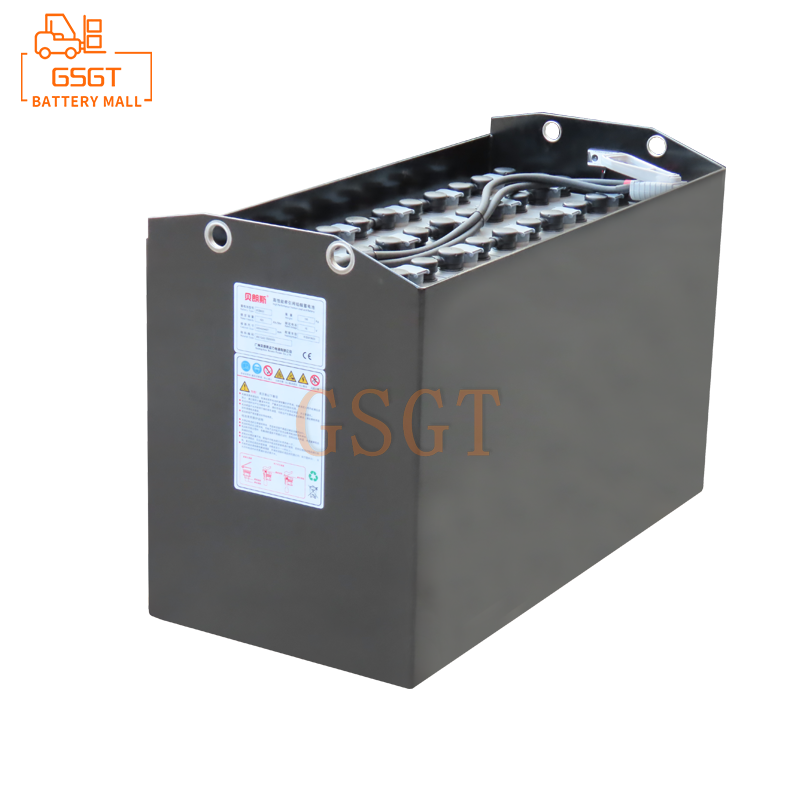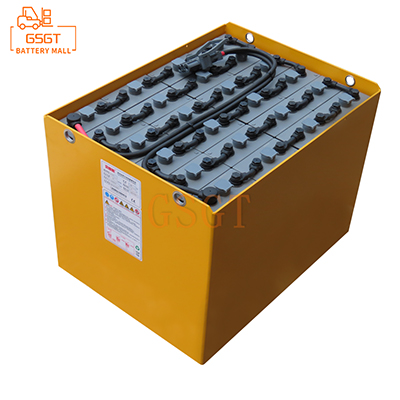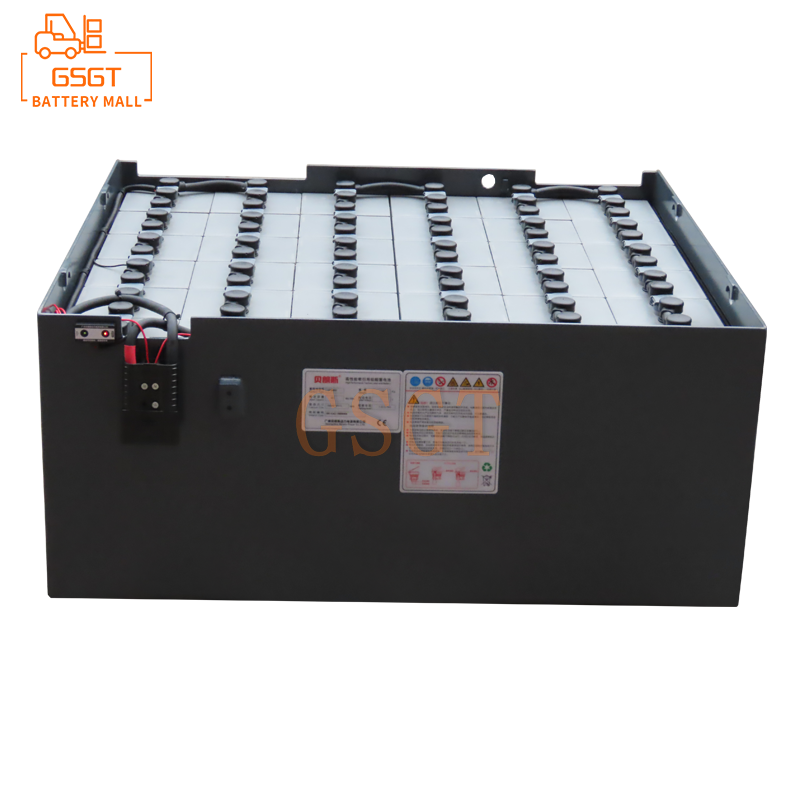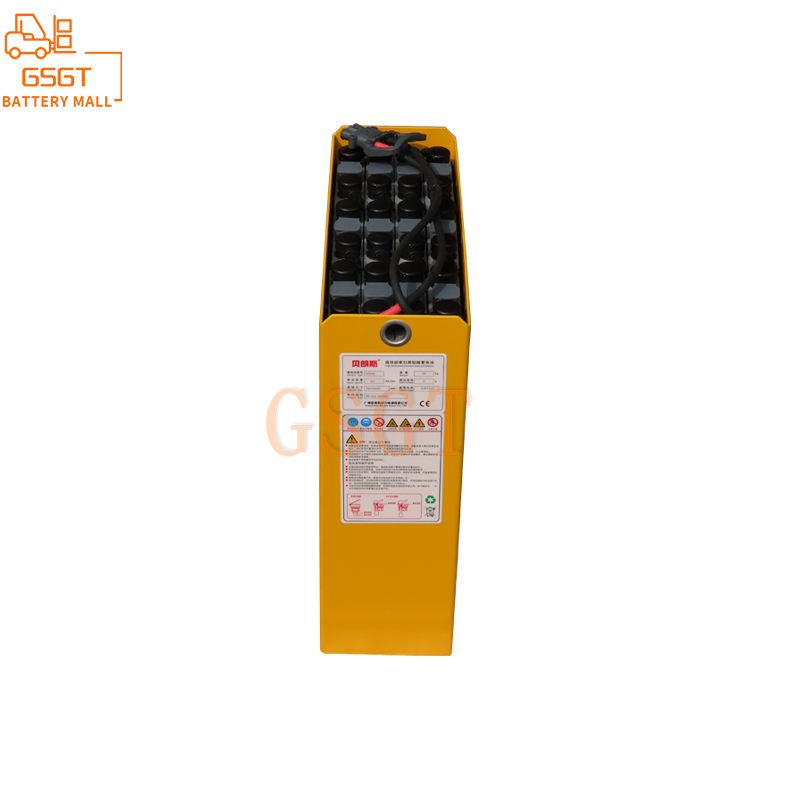Time:2025-04-25 10:03:52
Browse:613
In the modern logistics and warehousing industry, forklifts, as indispensable handling equipment, have greatly enhanced the efficiency of goods loading, unloading and handling. As the core power source of electric forklifts, the safety of lead-acid batteries has a crucial impact on the stable operation of forklifts, the life safety of operators, and the production efficiency of enterprises. However, in the actual usage process, the safety of lead-acid batteries in forklifts is often overlooked, and the series of safety issues caused thereby have brought huge losses to enterprises and society. Therefore, an in-depth exploration of the safety of lead-acid batteries in forklifts and the adoption of effective safety measures are important issues that need to be urgently addressed at present.
1. Working Principle and Structural Characteristics of Lead-Acid Batteries for Forklifts
Lead-acid batteries are mainly composed of positive plates, negative plates, separators, electrolyte and battery casings, etc. Its working principle is based on REDOX reactions. During the discharge process, lead dioxide at the positive electrode and lead at the negative electrode react with sulfuric acid in the electrolyte, converting chemical energy into electrical energy to provide power for the forklift. During the charging process, electrical energy is converted into chemical energy and stored. This unique working principle determines that lead-acid batteries will produce some special phenomena during use. For instance, when charging, gases such as hydrogen and oxygen will be generated. If these gases cannot be discharged in time, they may cause an explosion under certain conditions. Meanwhile, the sulfuric acid in the electrolyte is highly corrosive. Once it leaks, it will cause serious harm to equipment and human health.
2. Safety Hazards of Lead-acid Batteries in Forklifts
(1) Overcharging and overdischarging
In actual use, due to poor charging management or unreasonable operation of forklifts, overcharging and overdischarging are prone to occur. Overcharging can cause the battery to heat up, accelerate the aging and deformation of the battery plates, and at the same time generate a large amount of gas, increasing the internal pressure of the battery. In severe cases, it may lead to the cracking or even explosion of the battery casing. Over-discharge, on the other hand, can cause sulfation of the battery plates, reducing the battery's capacity and service life. It may also lead to battery leakage and corrode the relevant components of the forklift.
(2) Battery leakage
If the casing of a lead-acid battery has quality defects during the production process or is subjected to external forces such as collision or compression during use, it may lead to casing damage, thereby causing electrolyte leakage. The leaked sulfuric acid electrolyte not only corrodes the metal parts of the forklift, shortening the service life of the equipment, but also causes pollution to the surrounding environment. If the operator accidentally comes into contact with the leaked electrolyte, it will cause severe burns to the skin and eyes.
(3) Gas Explosion
As mentioned earlier, lead-acid batteries produce hydrogen and oxygen during the charging process. Hydrogen is a flammable and explosive gas. When the hydrogen accumulated inside a battery reaches a certain concentration and encounters an open flame or static spark, it will cause an explosion. In addition, if the battery is poorly ventilated and the gas cannot be discharged in time, it will also increase the risk of explosion.
(4) Fire Hazards
As batteries generate heat during charging and discharging, if the heat dissipation is poor or there is a short circuit or other faults inside the battery, it will cause the battery temperature to rise sharply. When the temperature reaches a certain level, it may cause a fire. Especially in some storage environments where a large amount of goods are stored around, once a battery causes a fire, the consequences would be unimaginable.
3. Factors Affecting the Safety of Lead-Acid Batteries in Forklifts
(1) Environmental factors in use
Forklift lead-acid batteries have rather strict requirements for the usage environment. If the ambient temperature is too high, it will accelerate the chemical reactions of the battery, causing it to overheat, shorten its lifespan, and at the same time increase the risk of explosion and fire. If the ambient temperature is too low, it will reduce the charging and discharging performance of the battery, causing the battery capacity to decrease. In addition, a humid environment can easily cause the battery casing and plates to rust and corrode, affecting the safety and service life of the battery. If dust and impurities enter the interior of the battery, it may cause a short circuit.
(2) Maintenance and care factors
Regular maintenance and upkeep are the key to ensuring the safe operation of forklift lead-acid batteries. However, in actual operation, many enterprises do not attach enough importance to the maintenance and care of batteries, lacking professional maintenance personnel and a complete maintenance system. For instance, if the electrolyte level of the battery is not checked in time, the plates will be exposed to the air when the level is too low, accelerating the sulfation of the plates. Failure to clean the battery on time causes a large amount of dust and electrolyte residue to accumulate on the battery surface, increasing the risk of battery self-discharge. Failure to carry out regular charging and discharging maintenance leads to a decline in battery performance.
(3) Operator factors
The operational skills and safety awareness of the operators directly affect the safety of the lead-acid batteries in forklifts. Some operators, due to the lack of professional training, are not familiar with the correct usage methods and safety precautions of lead-acid batteries. During the operation process, they may violate the rules, such as arbitrarily changing the charging time and charging current, and charging the battery before it has completely cooled down. In addition, some operators have a weak sense of safety and turn a blind eye to the potential safety hazards of batteries, failing to detect and report any abnormal conditions of the batteries in a timely manner.
4. Measures to Enhance the Safety of Lead-Acid Batteries in Forklifts
(1) Optimize the usage environment
Enterprises should, in accordance with the usage requirements of lead-acid batteries, provide dedicated charging and storage areas for forklifts. The charging site should maintain good ventilation conditions, install ventilation equipment, and promptly discharge the harmful gases produced during the charging process. At the same time, it is necessary to control the environmental temperature and humidity to avoid damage to the battery caused by excessively high or low temperatures and excessive humidity. In addition, the charging area should be far away from flammable and explosive items, and fire and explosion prevention facilities should be set up to ensure the safety of the charging process.
(2) Strengthen maintenance and upkeep
Establish and improve the maintenance and care system for lead-acid batteries, and conduct regular inspections and maintenance of the batteries. Specifically, it includes: checking the electrolyte level and replenishing distilled water or dedicated lead-acid battery replenishment fluid in a timely manner; Clean the surface of the battery to remove dust and residual electrolyte to prevent self-discharge of the battery. Check the connection terminals of the battery to ensure a firm connection and prevent poor contact from causing sparks. Regularly perform charge and discharge maintenance on the battery and operate in accordance with the prescribed charge and discharge procedures to extend the battery's service life. In addition, enterprises should also be equipped with professional maintenance personnel and provide regular training for them to enhance their maintenance skills and proficiency.
(3) Strengthen the training of operators
Strengthen the training of forklift operators to enhance their operational skills and safety awareness. The training content should cover the working principle, usage methods, safety precautions and troubleshooting of common faults of lead-acid batteries. Through training, operators can operate forklifts correctly, use batteries reasonably, and avoid safety accidents caused by non-compliant operations. At the same time, regular safety knowledge assessments should be conducted for the operators to ensure that they possess the necessary safety awareness and emergency response capabilities.
(4) Adopt advanced safety technologies
With the continuous development of technology, more and more advanced safety technologies are being applied in the field of lead-acid batteries. Enterprises can adopt smart chargers with overcharge, overdischarge and overheating protection functions. When the battery malfunctions, the charger can automatically cut off the power supply to prevent the occurrence of safety accidents. In addition, a battery monitoring system can be installed to monitor parameters such as voltage, current and temperature of the battery in real time. Once any abnormality is detected, an alarm signal will be issued promptly to remind the operator to take corresponding measures.
(5) Improve the emergency response plan
Enterprises should formulate a complete emergency response plan for forklift lead-acid battery safety accidents, clearly defining the emergency handling procedures and responsibility division in the event of battery leakage, explosion, fire and other accidents. Regularly conduct drills of emergency response plans to ensure that operators are familiar with emergency handling methods and can quickly and effectively deal with accidents when they occur, minimizing the losses caused by accidents to the greatest extent.
5. Conclusion
The safety of lead-acid batteries in forklifts is an important factor that cannot be ignored. It is related to the production safety, economic benefits of enterprises and the life and health of operators. Enterprises should fully recognize the potential safety hazards of lead-acid batteries, conduct in-depth analysis of various factors affecting their safety, and take a series of effective measures such as optimizing the usage environment, strengthening maintenance and care, intensifying the training of operators, adopting advanced safety technologies, and improving emergency plans to effectively enhance the safety of forklift lead-acid batteries and provide a strong guarantee for the sustainable development of enterprises. Meanwhile, with the continuous advancement of technology, we should also keep a close eye on the development trends of lead-acid battery technology, actively explore safer and more efficient battery solutions, and promote the safe and green development of the logistics and warehousing industry.

$2450

$3405

$4045

$1270

MESSAGE
Professional And Efficient
Security
Affordable Price
Professional Services